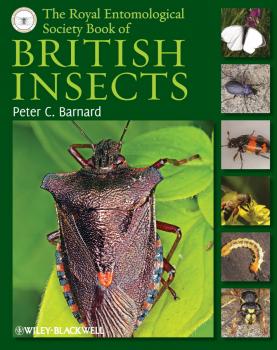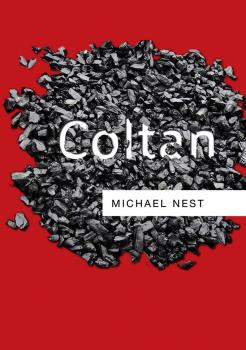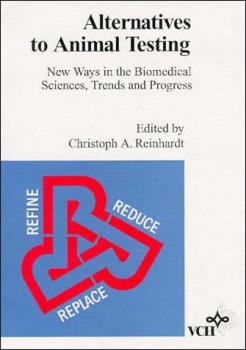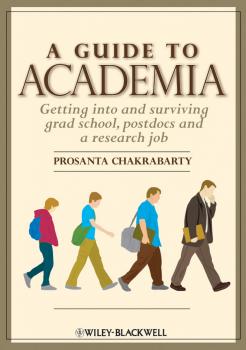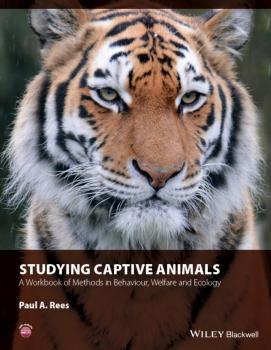Биология
Различные книги в жанре БиологияDie Entwicklung von Wald-Biozönosen nach Sturmwurf
Das Werk stellt allen mit Landschaftsgestaltung und Landschaftsplanung befassten Organisationen sowie der Fortwirtschaft Informationen bereit, die zu einer langfristig nachhaltigen Forstlichen Landnutzung beitragen. Berucksichtigt werden das erhohte Sturmwurfrisiko sowie die Anforderungen an Naturnahe und Biodiversitat.
The Royal Entomological Society Book of British Insects
The Royal Entomological Society (RES) and Wiley-Blackwell are proud to present this landmark publication, celebrating the wonderful diversity of the insects of the British Isles, and the work of the RES (founded 1833). This book is the only modern systematic account of all 558 families of British insects, covering not just the large and familiar groups that are included in popular books, but even the smallest and least known. It is beautifully illustrated throughout in full colour with photographs by experienced wildlife photographers to show the range of diversity, both morphological and behavioural, among the 24,000 species. All of the 6,000 genera of British insects are listed and indexed, along with all the family names and higher groups. There is a summary of the classification, biology and economic importance of each family together with further references for detailed identification. All species currently subject to legal protection in the United Kingdom are also listed. The Royal Entomological Society is one of the oldest and most prestigious of its kind in the world. It is the leading organisation for professional entomologists and its main aim has always been the promotion of knowledge about insects. The RES began its famous Handbooks for the Identification of British Insects in 1949, and new works in that series continue to be published. The Royal Entomological Society Book of British Insects has been produced to demonstrate the on-going commitment of the RES to educate and encourage each generation to study these fascinating creatures. This is a key reference work for serious students of entomology and amateur entomologists, as well as for professionals who need a comprehensive source of information about the insect groups of the British Isles they may be less familiar with.
Coltan
A decade ago no one except geologists had heard of tantalum or 'coltan' – an obscure mineral that is an essential ingredient in mobile phones and laptops. Then, in 2000, reports began to leak out of Congo: of mines deep in the jungle where coltan was extracted in brutal conditions watched over by warlords. The United Nations sent a team to investigate, and its exposé of the relationship between violence and the exploitation of coltan and other natural resources contributed to a re-examination of scholarship on the motivations and strategies of armed groups. The politics of coltan encompass rebel militias, transnational corporations, determined activists, Hollywood celebrities, the rise of China, and the latest iGadget. Drawing on Congolese and activist voices, Nest analyses the two issues that define coltan politics: the relationship between coltan and violence in the Congo, and contestation between activists and corporations to reshape the global tantalum supply chain. The way production and trade of coltan is organised creates opportunities for armed groups, but the Congo wars are not solely, or even primarily, about coltan or minerals generally. Nest argues the political significance of coltan lies not in its causal link to violence, but in activists' skillful use of mobile phones as a symbol of how ordinary people and transnational corporations far from Africa are implicated in Congo's coltan industry and therefore its conflict. Nest examines the challenges coltan initiatives face in an activist 'marketplace' crowded with competing justice issues, and identifies lessons from coltan initiatives for the geopolitics of global resources more generally.
Alternatives to Animal Testing. New Ways in the Biomedical Sciences, Trends & Progress
Opinion leaders in science and politics examine findings and legislation in alternatives to animal testing! Refine, reduce, replace – These are the three demands that scientists have placed upon themselves in their search for alternatives to animal testing. Indeed much interdisciplinary research is being carried on today, and new fields have emerged, such as in-vitro toxicology. The three R's call for new scientific insights. Moreover, validation and acceptance strategies have to be adapted, a process of much ongoing interest and vital concern to the pharmaceutical and cosmetic industries. Researchers need to know exactly what has been achieved and accepted in alternatives to animal testing in science and politics. In this book they have the opportunity to benefit from the knowledge and expertise of leading researchers and influential representatives of national and international regulatory authorities.
Forensic Entomology. An Introduction
Forensic Entomology provides undergraduates with a concise introduction to the subject. The book is written with the clarity necessary for students starting out in entomology yet authoritative enough to prove useful for more experienced researchers. Worked examples of the necessary mathematics, including how to use excel to process data, coupled with lab protocols and self-assessment questions make the book an essential starting point in the subject. Assuming little prior knowledge of either biology or entomology the book provides information on identification, life cycles and ecology of insects presented in a forensic context. Information is conveyed in an accessible style with practical tasks and suggestions for further reading included in each chapter. Fully revised and updated to include new research in the field New chapter on aquatic forensic entomology New pictorial key to aid identification of species contributed by Dr. Krzysztof Szpila, Nicolaus Copernicus University, Poland Further coverage of civil applications of forensic entomology Practical tasks and further reading included to aid understanding Colour plate section and improved illustrations throughout to assist in the identification of insects associated with the corpse Approaches the topic from the dual perspectives of basic entomology and its forensic applications Covers the contributions to forensic investigations of both flies and beetles Provides information on culturing insects collected from crime scenes Guides students through the processes of writing entomological court reports and presenting in court alongside the scientific topics Extended coverage of PMI calculations, role of professional associations for forensic entomologists and sampling at the crime scene New sections to discuss the identification of traces of explosives found in larvae, puparia and pupae and DNA sampling from insects
A Guide to Academia. Getting into and Surviving Grad School, Postdocs and a Research Job
A Guide to Academia is a handbook for all those individuals thinking seriously about going to graduate school. Written by an author with extensive experience navigating the academic world, the book explains all the steps and potential bumps in the road that a student might encounter as they take the plunge into academia. Each chapter begins with a section called the «hard truth,» which will help students determine if they are on the right path. Starting with an undergraduate student looking for a graduate school, the reader is taken on a journey up the academic ladder through graduate studies, a postdoctoral fellowship and an assistant professorship. Each chapter gives advice on not only how to survive the current stage but how to get to the next stage quickly. Enhanced with material from the author's own job applications and interview presentations, A Guide to Academia provides concrete examples of the tools needed for a successful career in academia.
Conservation of Wildlife Populations. Demography, Genetics and Management
Professor L. Scott Mills has been named a 2009 Guggenheim Fellow by the board of trustees of the John Simon Guggenheim Memorial Foundation. Conservation of Wildlife Populations provides an accessible introduction to the most relevant concepts and principles for solving real-world management problems in wildlife and conservation biology. Bringing together insights from traditionally disparate disciplines, the book shows how population biology addresses important questions involving the harvest, monitoring, and conservation of wildlife populations. Covers the most up-to-date approaches for assessing factors that affect both population growth and interactions with other species, including predation, genetic changes, harvest, introduced species, viability analysis and habitat loss and fragmentation. Is an essential guide for undergraduates and postgraduate students of wildlife biology, conservation biology, ecology, and environmental studies and an invaluable resource for practising managers on how population biology can be applied to wildlife conservation and management. Artwork from the book is available to instructors online at www.blackwellpublishing.com/mills. An Instructor manual CD-ROM for this title is available. Please contact our Higher Education team at [email protected] for more information.
Studying Captive Animals. A Workbook of Methods in Behaviour, Welfare and Ecology
Studying Captive Animals outlines the methods that may be used to study the behaviour, welfare and ecology of animals living under the control of humans, including companion animals, feral populations, and those living on farms and in zoos. This book is a step-by-step guide to the whole process of conducting a scientific study: from designing the original project, formulating testable hypotheses, and collecting and analysing the data, to drawing conclusions from the work and writing it up as a scientific report or paper. It also illustrates how to write a formal research proposal – a crucial and often difficult element of the student project – and how to deal with the ethical review process. Sample data collection sheets are provided and the analysis and presentation of data are worked through in diagrammatic form. In addition, exercises are included that enable the reader to practice analysing different types of data and advice is provided on the selection of appropriate statistical tests. The text describes the different types of student projects that may be undertaken in the field, and explains where secondary data may be found for zoos. This is an insightful resource, particularly for those studying and working with zoo and farm animals. It is essential reading for students studying zoo biology and animal management; it is also suitable for students on courses in animal behaviour, animal welfare, zoology, biology, psychology, animal science, animal production, animal ecology, conservation biology, and veterinary science. This book is primarily intended for undergraduates but will also be of value to postgraduate students who have not previously engaged in field studies. Professionals working in institutions that are members of the World Association of Zoos and Aquariums, the European Association of Zoos and Aquaria and other regional and national zoo organisations will benefit from access to this practical guide.
Replacing Animal Models. A Practical Guide to Creating and Using Culture-based Biomimetic Alternatives
Over the last decade, in vitro models have become more sophisticated and are at a stage where they can provide an effective alternative to in vivo experiments. Replacing Animal Models provides scientists and technicians with a practical, integrated guide to developing culture-based alternatives to in vivo experiments. The book is neither political nor polemical: it is technical, illustrating by example how alternatives can be developed and used and providing useful advice on developing others. After looking at the reasons for and potential benefits of alternatives to animal experiments, the book covers a range of methods and examples emphasising the design considerations that went into each system. The chapters also include 'case studies' that illustrate the ways in which culture models can be used to answer a range of important biological questions of direct relevance to human development, physiology, disease and healing. The thesis of this book is not that all animal experimentation can be replaced, now or in the near future, by equally effective or superior alternatives. Rather, the premise is that there is substantial opportunity, here and now, to do some common types of experiment better in vitro than in vivo, and that doing so will result in both scientific and ethical gains.
Forest Entomology. A Global Perspective
Insects are the most abundant and diverse organisms that inhabit our planet and are found in all the world’s forest ecosystems. Many feed and/or breed on parts of trees. Some perform important functions, such as pollination or break-down of dead vegetation. Others weaken, deform or kill trees, and compete with humans for the many goods and services that trees and forests provide. Forest Entomology: A Global Perspective examines forest insects in a global context and reviews their dynamics, interactions with humans and methods for monitoring and management of species that damage forests. Also provided are 235 profiles of forest insects, worldwide. A series of tables provides summaries of the distribution and hosts of many more species. Included are those that damage forests, others that are simply curiosities and some that are beneficial. This book is designed as a reference for students, practicing foresters and forest health specialists, especially for those who work internationally or are concerned with species that have the potential to expand their ranges via international trade, travel or environmental changes.

